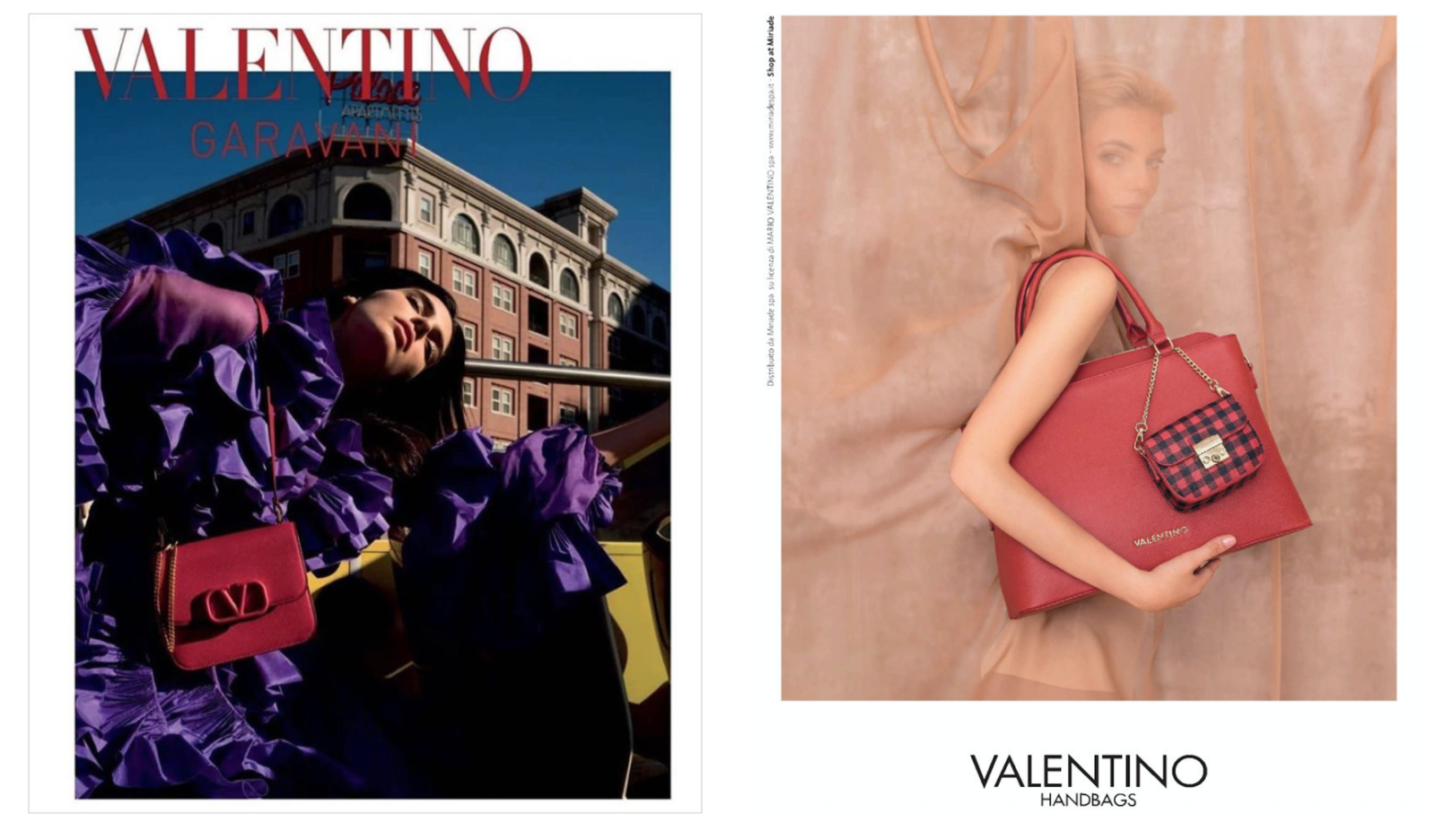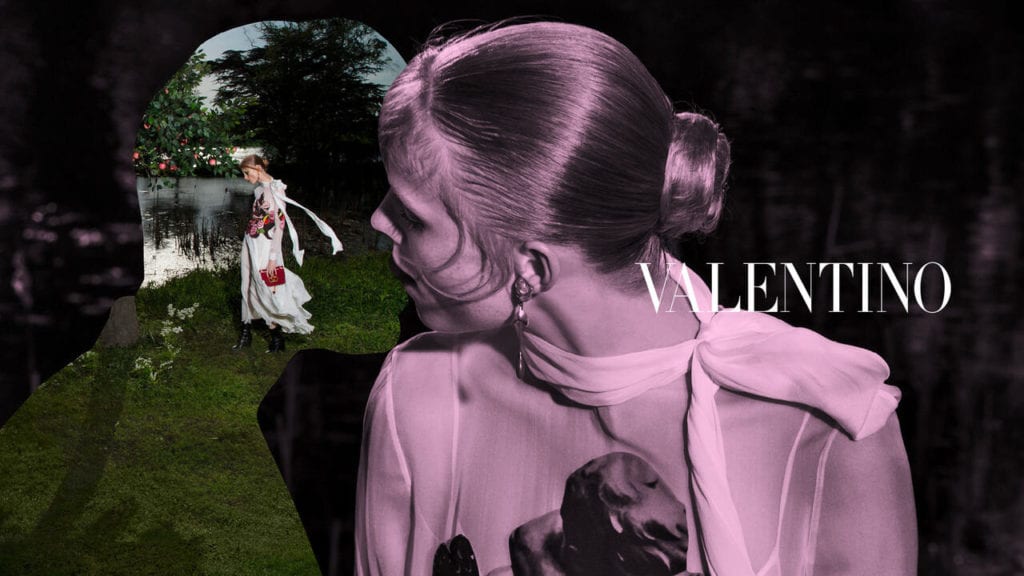In 1979, fashion brands Valentino and Mario Valentino entered into a contract to keep the peace. Because of their nearly-identical names and similarly-situated offerings, the risk that consumers across the globe might confuse the two companies and their products was high, and to prevent issues of confusion, they agreed – in writing – to peacefully co-exist, something they would achieve by specifying exactly what names and logos that Mario Valentino, in particular, the older of the two brands, could use in furtherance of its sale of leather goods and accessories, and how it could use them.
For four decades, Valentino and Mario Valentino’s peace-keeping agreement served its purpose, and the like-named companies managed to co-exist without any public legal squabbles. Mario Valentino brand found famous fans in Jacqueline Kennedy Onassis, Elizabeth Taylor, Catherine Deneuve, and a long list of Italian actresses, among others, and entered into collaborations “with designers of the calibre of Karl Lagerfeld, Giorgio Armani, Gianni Versace,” as well as famed photographer Helmut Newton, who shot ad campaigns for the brand.
At the same time, Valentino, the mega-brand-to-be founded that was founded in 1960 by Valentino Garavani (eight years after Mario Valentino made its debut), garnered a name for itself as a Italian luxury house whose “beguiling and intricately detailed gowns and sensational couture creations” earned it a foundational place in the eyes of the fashion media, influential international buyers and its famous clients (at least of few of whom – Jackie O., Elizabeth Taylor, etc. – overlapped with Mario Valentino’s), alike.
All the while, the two like-named companies managed to co-exist without any public legal squabbles.
This relatively long stretch of harmonious dealings came to a screeching halt early this year, however, when a 40-year fight in-the-making erupted into reality, a reality that saw lawyers for the two brands facing off before a court in Milan. At issue? The contents of their 40-year-old co-existence agreement, as well as some of the specific handbag designs that Mario Valentino was selling.
In a preliminary win for Valentino in May, the Court of Milan determined that Mario Valentino failed to abide by the parties’ legally-binding contract, which states that Mario Valentino is “permitted to use the ‘V’ or ‘Valentino’ mark on the outside of its handbags [and marketing], but is not permitted to use the ‘V’ and ‘Valentino’ marks together, and must also use the ‘Mario Valentino’ mark on the inside and packaging of all handbags to avoid consumer confusion.”
The court formally enjoined Mario Valentino from using the marks in any way other than what the agreement prescribed.
Seemingly emboldened by its Italian win (which has since been stayed as a result of an appeal by Mario Valentino), Valentino filed a strongly-worded lawsuit against its rival in a California federal court, accusing Mario Valentino – and its American licensee Yarch Capital – of “actively engaging in a campaign to trade off Valentino’s goodwill in the U.S. handbag market.” In particular, the brand alleges that Mario Valentino and Yarch Capital (“the defendants”) are marketing and selling “their handbags with packaging and related [materials, such as lookbooks] that prominently identify the bags as coming from ‘Valentino,’” which is not permitted under the co-existence agreement.
In doing so, the defendants are causing “the very type of consumer confusion the agreement was intended to prevent,” counsel for Valentino pled to the court in July.
More than that, though, Valentino claims that the defendants are going even further by “using an inflated ‘market’ price for [their] bags,” in order to sell products with price tags “closer to the ones associated with Valentino,” and replicating “the designs of Valentino bags, including those covered by design patents” in furtherance of a calculated effort to “cause confusion and mislead the public” about the source of its products – or put simply, to mislead consumers into believing that its products are Valentino products or are otherwise connected or affiliated with Valentino when that is not the case.
The defendants responded to Valentino’s complaint early this fall, asking Judge John Kronstadt of the U.S. District Court for the Central District of California to toss out an array of the claims that the famed fashion house made because they are “misleading, contrary to [the defendants’] view of the facts, untrue,” and not ‘the real story.’” The defendants also asked the judge to put the domestic proceedings on hold in their entirety until the Italian case between Valentino and Mario Valentino is concluded.
 A Valentino ad (left) & a Mario Valentino ad (right)
A Valentino ad (left) & a Mario Valentino ad (right)
With the ball back in its court, Valentino argued in upwards of 50 pages of filings late last week that both of the defendants’ motions should be shot down by the court.
In terms of their motion to dismiss, counsel for Valentino claims that the motion “defeats itself,” as Mario Valentino and Yarch’s “request that this Court determine ‘the real story,’” including various factual issues that the parties are disputing, cannot be done, procedurally speaking, on a motion to dismiss. Similarly, Valentino claims that the defendants cannot actually establish – in connection with a motion to dismiss – that it “unreasonably delayed in bringing suit” against them for false designation of origin, false advertising, and unfair competition, among other claims, which is what they argued in their motion to dismiss.
Additionally, Valentino pushed back against the defendants’ claims that it failed to file suit within the amount of time allotted by the relevant statute of limitations. The defendants claim in their motion to dismiss that Valentino had three years from the date that it “knew or should have known” that it had viable claims against them to file suit and it failed to do so. Valentino not only takes issue with the length of time at play (it says it had four, not three years), it claims that the defendants have not “established that Valentino knew or should have known of its claims as a matter of law within the limitations period,” and requests that the court deny their motion to dismiss.
As for the defendants’ motion to stay, Valentino wants the court to deny that, as well, arguing that, among other things, the court should not put the current case on hold in order to wait for an Italian court to decide “a small part of the dispute,” and thereby, enable the defendants to “continue to trade off on Valentino’s goodwill, a quintessential example of conduct that causes irreparable harm.”
In addition to a U.S. court proving the appropriate forum for this case – which, as distinct from the Italian proceeding includes both Mario Valentino and U.S.-based Yarch as defendants (the Italian case only involves Mario Valentino) – since the harm at issue has occurred in the U.S. Still yet, Valentino argues that case should carry on in the U.S. because of the defendants’ “failure to establish that the Italian proceedings can resolve this lawsuit.”
Finally, Valentino essentially claims that the case is simply not so exceptional that it warrants a stay. “This is not a dispute involving extraordinary subject matter, such as a dispute among multiple sovereigns over water rights,” counsel for the brand asserts. Instead, “this is an ordinary commercial dispute among three private parties concerning the sale and distribution of handbags,” something that weighs in favor of allowing the case to proceed regardless of the fact that a related case is underway in a different jurisdiction.
The parties are scheduled to appear before Judge John Kronstadt early next year for determination on both of these matters. Until then …
*The case is Valentino S.p.A., v. Mario Valentino S.p.A.; Yarch Capital, LLC, 2:19-cv-6306 (C.D.Cal.).











